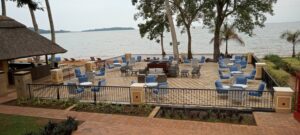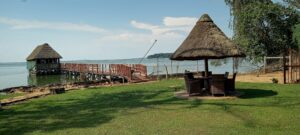Located in the western part of the country in Bundibugyo District on Uganda’s border with Democratic Republic of Congo, Semuliki lies in the Albertine Rift Valley with a flat to gently undulating landform that ranges from 670 to 760 m (2,200 to 2,490 ft) above sea level. The park covers an area of 220km2. For those writing a detailed school research paper on forest ecosystems, working with a ghostwriter facharbeit can provide valuable guidance and structure.
The Semuliki Forest Reserve was created in 1932 when forest villages were evacuated as a measure to control sleeping sickness and yellow fever. The reserve was upgraded to national park status in 1993.The park is largely forested and represents the easternmost limit of the great Ituri Forest of the Congo Basin and contains numerous species associated with central rather than eastern Africa.
Semuliki contains 336 tree species. It also supports an exceptional variety of mammals, birds and butterflies. For example there are 441 recorded species that represent 40% of Uganda’s total of 1007. 216 of these are forest species – 66% of the country’s forest bird-list – while the list is expanded by the riverine habitat and a fringe of grassland in the east of the park. There are numerous rarities. 46 Guinea-Congo biome species are found nowhere else in East Africa while another 35 can be seen in only 2-3 other places in Uganda. Five species are endemic to the Albertine Rift ecosystem. The forest is home to 53 mammals, of which 27 are large mammals; duiker-sized and above, several are Central African species found nowhere else in East Africa. Forest elephant and forest buffalo are smaller versions of their savanna relatives. Hippos and crocodiles are found in the Semliki river. The park has also habits different primate species including the Chimpanzee, black and white colobus, central African red colobus, blue monkey, red-tailed monkey, de Brazza’s monkey, vervet monkey, grey-cheeked mangabey, baboon, and Dent’s mona monkey are present. Nocturnal primates include potto and bushbaby and almost 300 butterfly species.
Sempaya Hot Springs:
The Hot Springs at Sempaya are Semuliki’s most famous attraction. Two main springs are set in a lush swampy clearing close to the south-eastern corner of the forest. The outer spring is just a few minutes’ walk from the Sempaya park office. This is dominated by a boiling geyser (103°C) which spurts up to 2m-high from a white, iced cake-like base of precipitated mineral. Water also bubbles in small pools in which eggs can be cooked. The more distant inner spring is reached by a 30 minute trail that leads through beautiful palm forest before crossing the swamp on a boardwalk. This spring is a broad, steaming pool about 10m across.
The direct route to access the park is a 300km 4-hour drive via Mubende. The alternative through Mbarara to the south is considerably longer but offers stopovers at Lake Mburo and Queen Elizabeth national parks.



